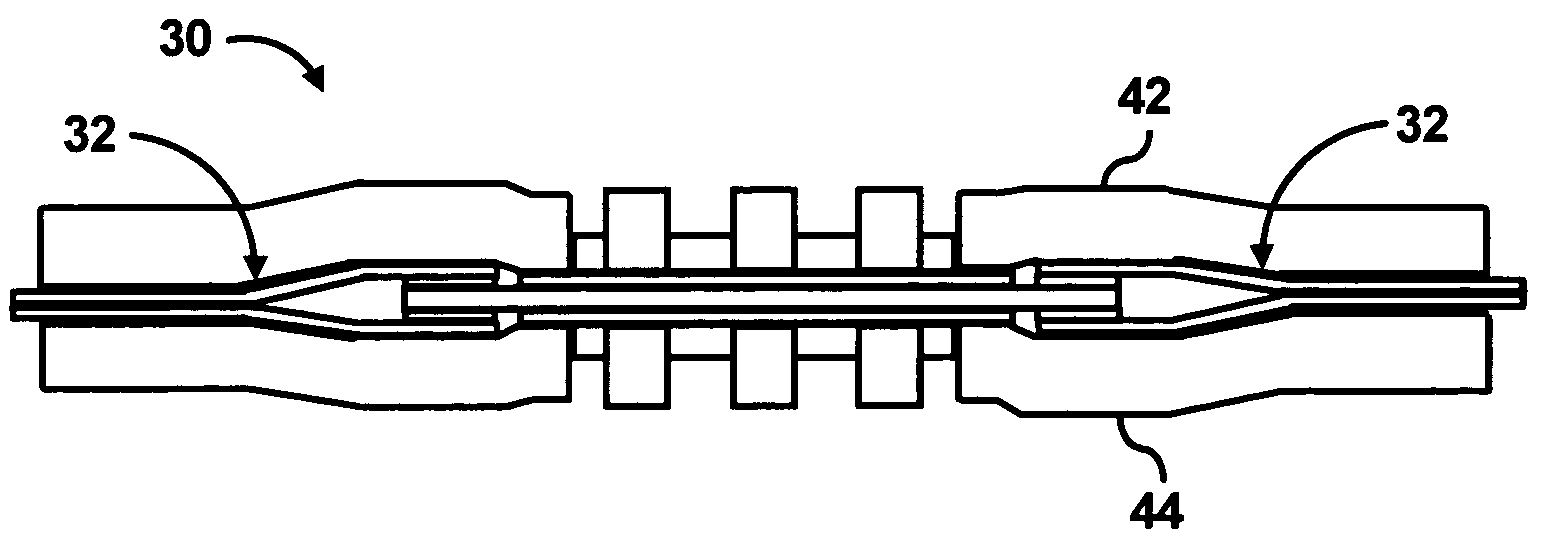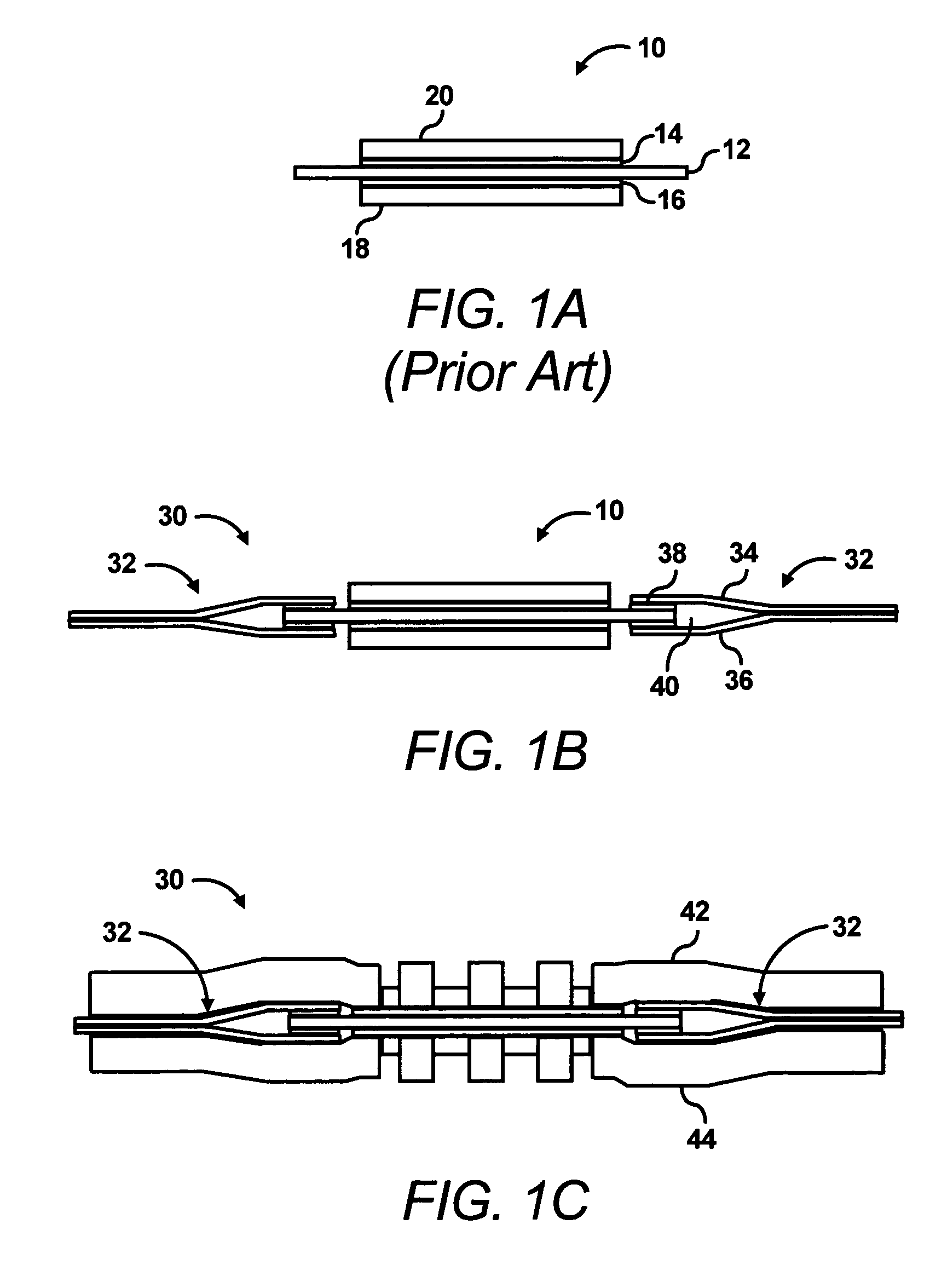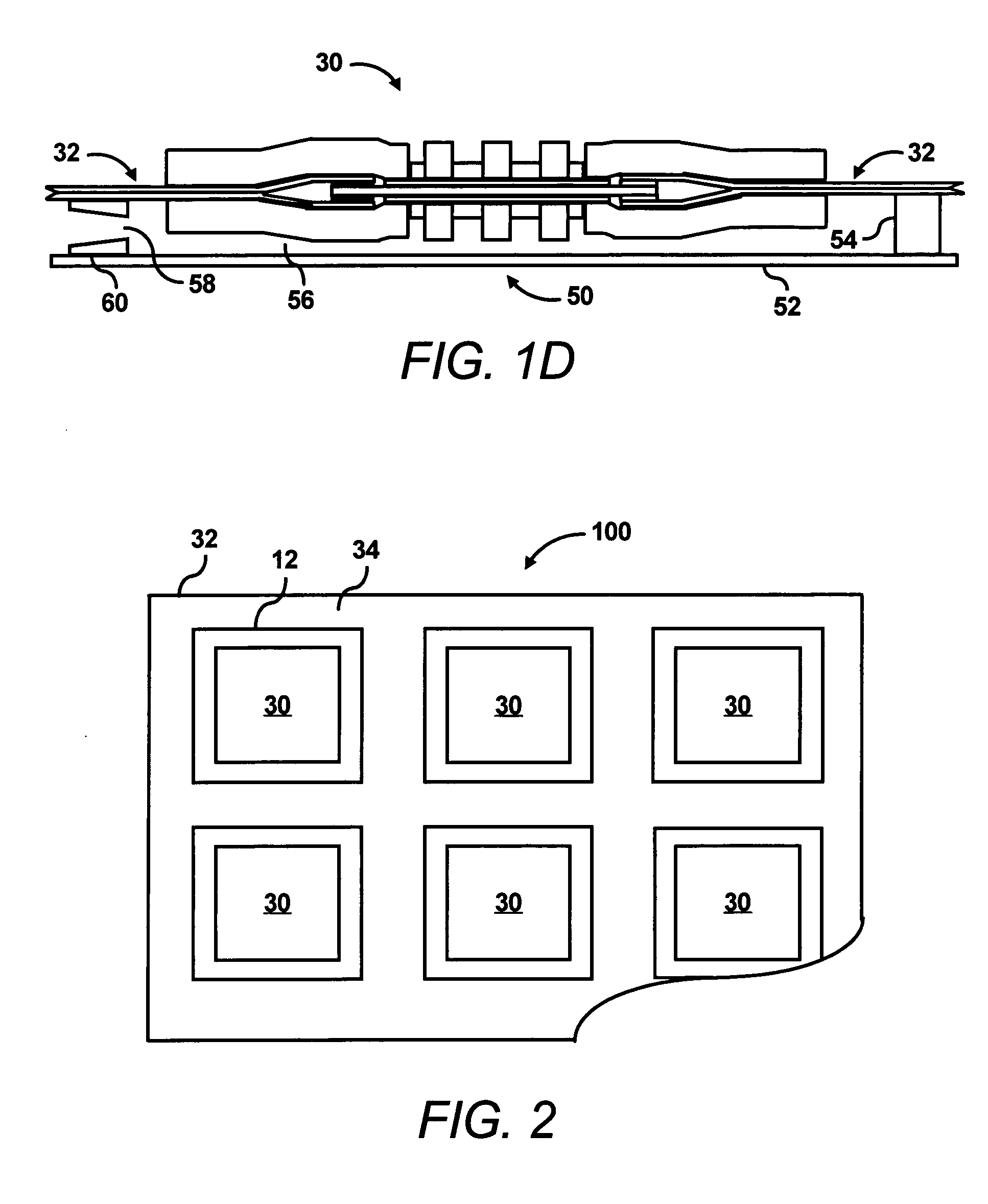Fuel cell assembly gasket for fuel containment
a technology of assembly gaskets and fuel cells, which is applied in the direction of cell components, cell component details, electrochemical generators, etc., can solve the problems of reduced fuel cell efficiency, diffusional limitations, and damage from contact with flow field plates,
- Summary
- Abstract
- Description
- Claims
- Application Information
AI Technical Summary
Benefits of technology
Problems solved by technology
Method used
Image
Examples
Embodiment Construction
[0021] For simplicity and illustrative purposes, the present invention is described by referring mainly to an exemplary embodiment thereof. In the following description, numerous specific details are set forth in order to provide a thorough understanding of the present invention. It will be apparent however, to one of ordinary skill in the art, that the present invention may be practiced without limitation to these specific details. In other instances, well known methods and structures have not been described in detail so as not to unnecessarily obscure the present invention.
[0022] According to an embodiment of the invention, a seal or gasket is provided around an edge of a proton exchange membrane, or a polymer electrolyte membrane, (PEM) to substantially prevent leakage between fuel and oxidant. Throughout the present disclosure, the terms “seal” and “gasket” are used interchangeably and may be defined as elements designed to substantially prevent escape of gas or fluids. The gas...
PUM
| Property | Measurement | Unit |
|---|---|---|
| dimension | aaaaa | aaaaa |
| height | aaaaa | aaaaa |
| heights | aaaaa | aaaaa |
Abstract
Description
Claims
Application Information
 Login to View More
Login to View More - R&D
- Intellectual Property
- Life Sciences
- Materials
- Tech Scout
- Unparalleled Data Quality
- Higher Quality Content
- 60% Fewer Hallucinations
Browse by: Latest US Patents, China's latest patents, Technical Efficacy Thesaurus, Application Domain, Technology Topic, Popular Technical Reports.
© 2025 PatSnap. All rights reserved.Legal|Privacy policy|Modern Slavery Act Transparency Statement|Sitemap|About US| Contact US: help@patsnap.com



